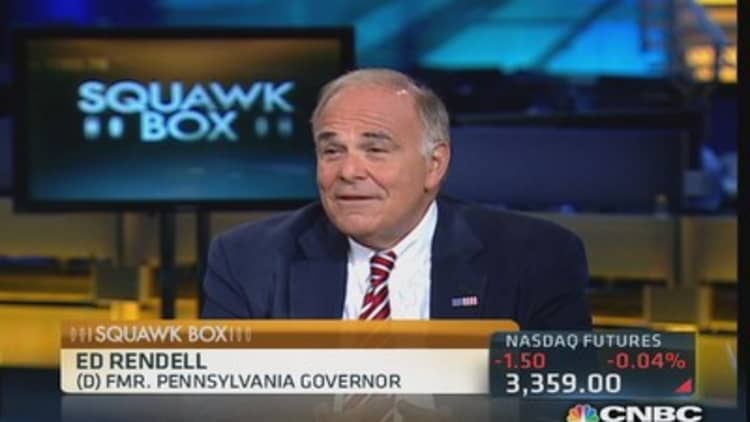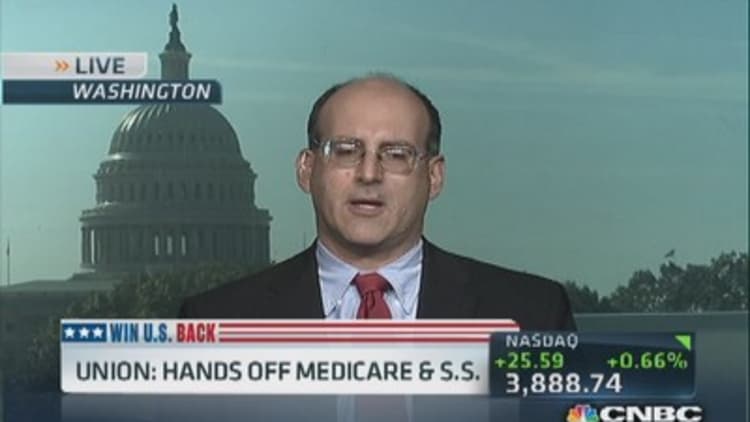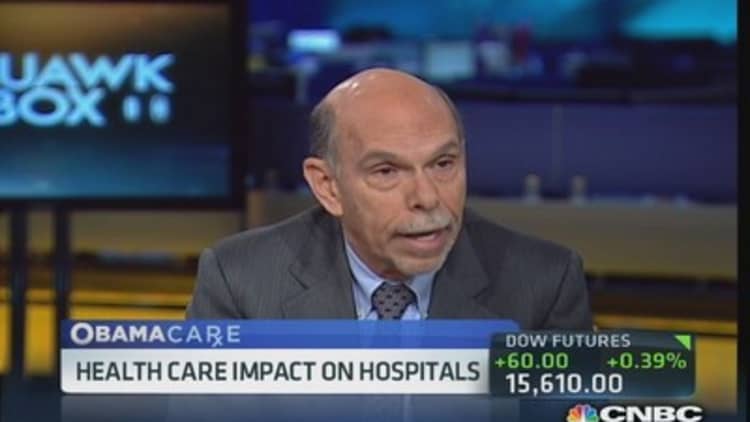Underlying fierce Republican efforts to stop President Obama's health care law and the White House drive to save it is a simple historical reality: Once major entitlement programs get underway, they quickly become embedded in American life. And then they grow.
That makes the battle over the Affordable Care Act more consequential than most Washington political fights. "If it's in place for six months, it will be impossible to repeal it or change it in ways that significantly reduce the benefits," said Robert D. Reischauer, a Democrat who used to lead the Congressional Budget Office.
Douglas Holtz-Eakin, another former CBO director, reflects the concern of fellow Republicans in framing the stakes more dramatically. Either the law's health insurance exchanges "can't cut it," he explained, or "it's Katie, bar the door we have an explosively growing new program."
More from The New York Times:
Mired in Costly Credit From Doctors
AWave of Sewing Jobs as Orders Pile Up
A Recharging Industry Rises

Ever since President Franklin D. Roosevelt's New Deal during the Great Depression, the dominant pattern for major entitlements—the term for government assistance programs open to all who qualify and not subject to annual budget constraints—has been durability and expansion. That is the record Senator Ted Cruz of Texas refers to in warning Republicans not to allow Americans to become "hooked on the subsidies"—an argument Mr. Obama sarcastically recast as, "We've got to stop it before people like it too much."
(Read more: Obamacare site: 'Come back!')
Congress enacted Social Security in 1935 to provide benefits to retired workers. In 1939, benefits were extended to their dependents and survivors. Later the program grew to provide disability coverage, cover self-employed farmers and raise benefit levels.
President Lyndon B. Johnson's Great Society created Medicare and Medicaid in the 1960s to provide health coverage for the elderly and the poor. They followed the same pattern.
In 1972, Congress extended Medicare eligibility to those under 65 on disability and with end-stage renal disease. In 2003, Congress passed President George W. Bush's plan to offer coverage under Medicare for prescription drugs.
Lawmakers initially linked Medicaid coverage to those receiving welfare benefits, but over time expanded eligibility to other "poverty-related groups" such as pregnant women. In 1997, President Bill Clinton signed into law the Children's Health Insurance Program, which now covers eight million children whose families' incomes are too high to qualify for Medicaid.
"You pull more people in, and the benefits become more generous," Mr. Holtz-Eakin said. "Congress knows how to fix an inequity—write a check."
(Read more: Medicare will be broke in 2026)
Those expansions only partly explain why spending on government assistance programs, which also include welfare, food stamps, farm subsidies and federal retirement, has grown to 56 percent last year from less than 30 percent of federal spending in 1962, according to the Congressional Research Service. The biggest reasons: the aging of the population, which has swollen the rolls of Social Security, Medicare and Medicaid (which also covers nursing home care), and the steady growth in the cost of health care.

Lawmakers have, in rare circumstances, shown the willingness and ability to pare back entitlements. The one recent reversal of a major entitlement occurred just a year after enactment. In 1989, older Americans irate over higher taxes pushed Congress to repeal the Medicare Catastrophic Coverage Act that President Ronald Reagan had signed in 1988.
In 1996, Mr. Clinton and a Republican Congress converted federal welfare benefits into a block grant to states and introduced time limits for eligibility.
"That was for a population that has little political power," Mr. Reischauer said. The same is true for the current effort by congressional Republicans to sharply cut food assistance spending for the poor.
More influential constituencies, such as the agriculture industry, have greater ability to push back.
(Read more: Jim Rogers: Forget financing, think farming)
The Cato Institute notes that, having curbed farm subsidies in 1996, Congress later expanded them again by adding new crops to the rolls and creating a "countercyclical" price guarantee. In the same farm bill debate on cutting food stamps this summer, the House embraced higher payments to some farmers, including wealthy ones.
Mr. Obama has already raised the possibility of raising the cost of the health law by saying he has directed aides to explore relief for some customers now facing rate increases. Major employers could raise costs further by choosing to stop providing coverage for their workers, making more Americans eligible for federal subsidies.
Some Republicans see the prospect of metastasizing costs under the law as no accident.

"They see it as a subterfuge leading to single-payer," government-run health care, said Ron Haskins, a former Republican congressional aide and adviser to Mr. Bush. Mr. Haskins, a key figure in the 1996 welfare overhaul, said Republicans should aim to limit the cost of subsidies rather than repeal the law.
The political system's heightened focus on deficit reduction lately has increased the odds that a strategy to restrain spending could work. Moreover, some recent trends in entitlement spending point toward the possibility of slower long-term growth.
(Read more: The myth of the modern welfare queen)
Medicare's 10-year-old prescription drug program has cost less than forecast. Republicans credit the effects of the program's reliance on market forces; Democrats point toward lower than expected enrollment and increased use of generic alternatives to major drugs whose patents have expired.
More important, health cost inflation over all has slowed in recent years, curbing expected growth in Medicare and Medicaid expenses. The durability and sources of that trend remain unclear; some experts point to short-term effects of a weak economy, others to changes in medical industry reimbursement practices that the health law has encouraged.
So long as it lasts, however, the trend offers hope of offsetting the long-term liabilities that budget pessimists have come to fear from major entitlement programs.
"That's the $64 trillion question," said Mr. Reischauer, one of two public trustees of the Social Security and Medicare programs. "I have no idea what the bottom line will be on that."
—By John Harwood of The New York Times.

